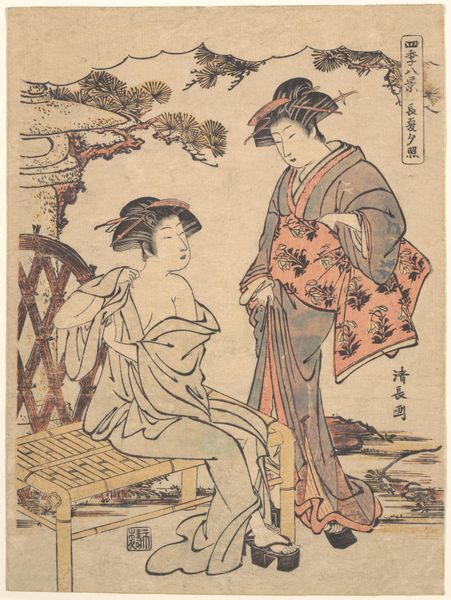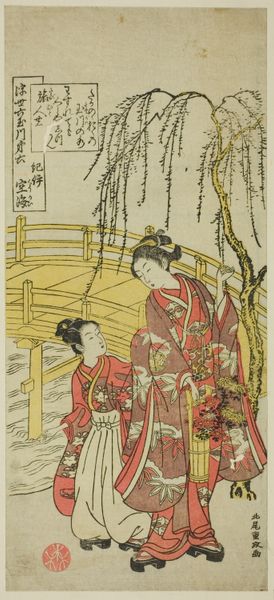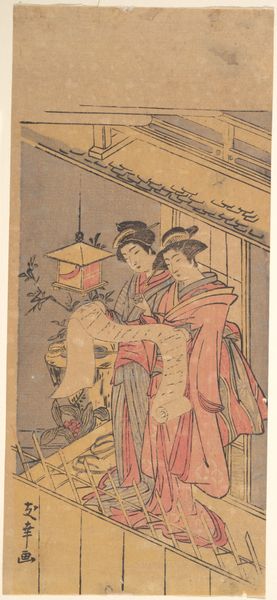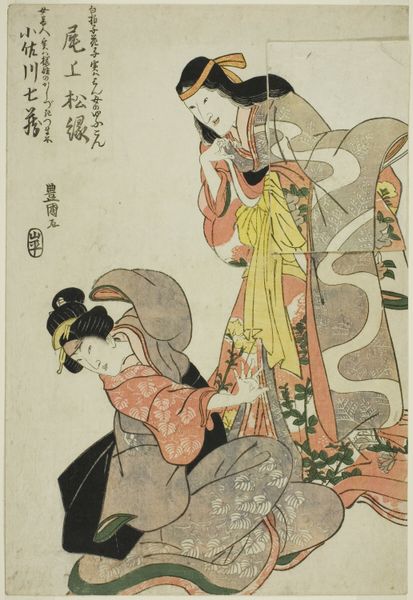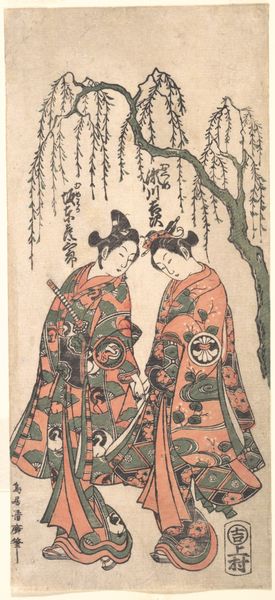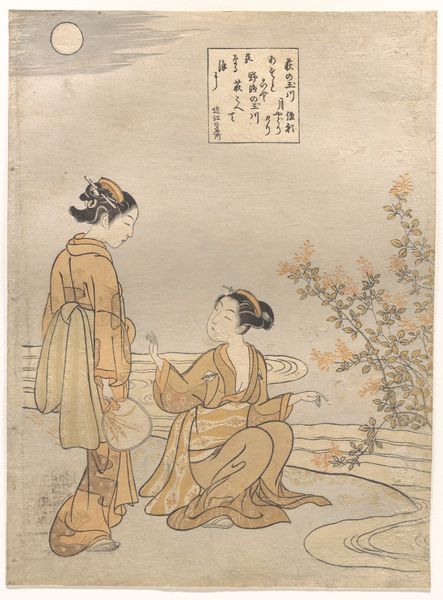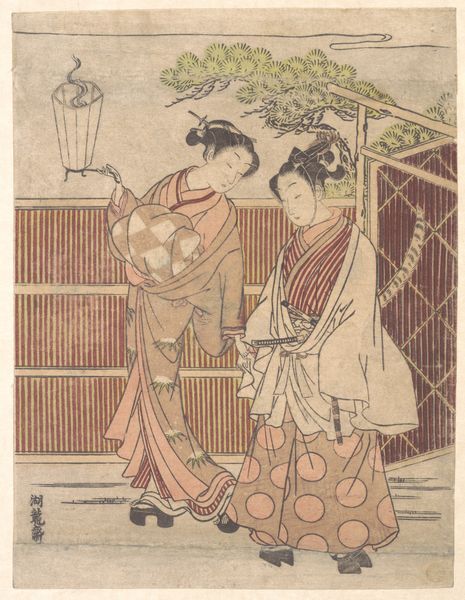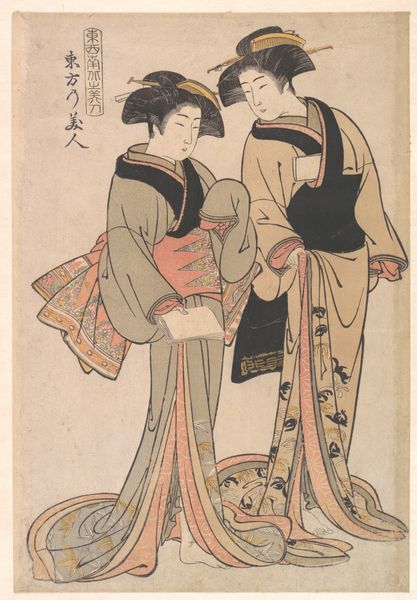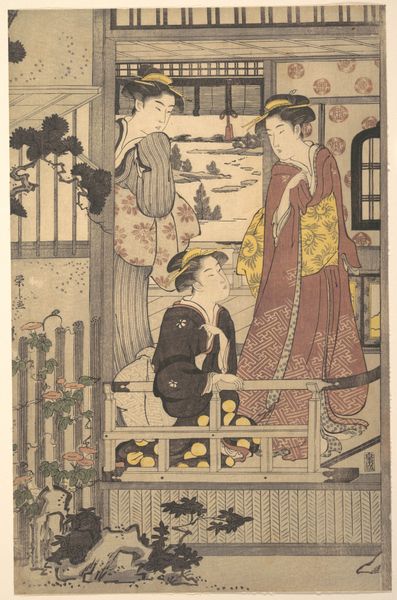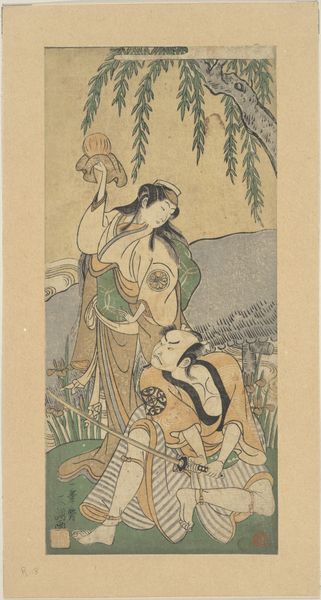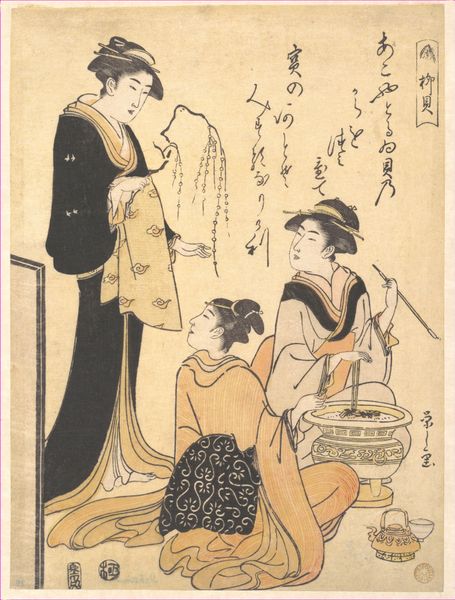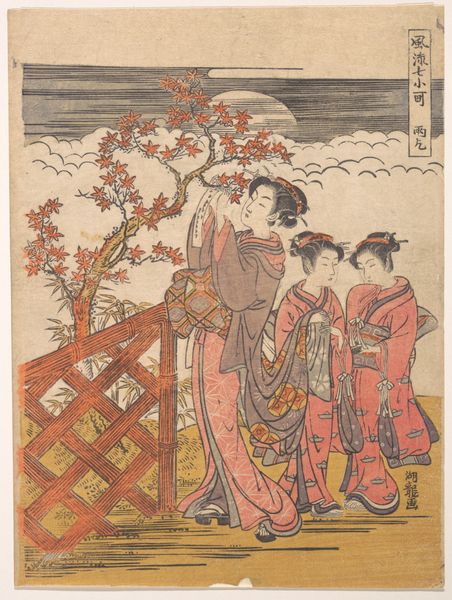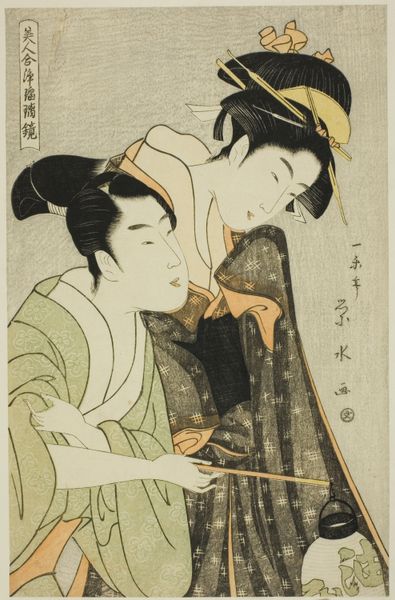
The Actors Segawa Kikunojo I as Osome and Sodesaki Kikutaro as Hisamatsu in the play "Osome Hisamatsu Shinju," performed at the Nakamura Theater in the sixth month, 1731 1731
0:00
0:00
print, woodblock-print
# print
#
asian-art
#
ukiyo-e
#
figuration
#
woodblock-print
#
genre-painting
Dimensions: 32.3 × 15.2 cm
Copyright: Public Domain
Curator: The prevailing color here is definitely "yearning ochre," don't you think? Melancholy dipped in gold. Editor: Well, you certainly have a knack for poetic color descriptions! I see the preponderance of yellows and creams... Tell me more. What is actually happening here? Curator: What we're looking at is a woodblock print by Okumura Masanobu created in 1731. It’s called "The Actors Segawa Kikunojo I as Osome and Sodesaki Kikutaro as Hisamatsu in the play "Osome Hisamatsu Shinju," performed at the Nakamura Theater in the sixth month, 1731." Currently, it resides at The Art Institute of Chicago. Editor: Woah! What a title. That’s some mouthful! A suicide play I guess? This looks very...intimate, maybe too tender for what comes next? Almost claustrophobic actually; it could do with a bit of blue... Curator: In Ukiyo-e prints, intimacy and personal dramas were often romanticized despite tragic elements. Note how the theatrical world spills into daily life. These weren't just portraits of actors, but fashion plates. People looked to these prints to glean cues for makeup, for how to knot a belt. The symbolism in clothing is amazing! It represents love and despair. Editor: And look at how densely packed it is! Not an inch spared to let the eye breathe. All this pattern, the costumes, the walls and blooming cherry everything vies for our attention. It reflects maybe that anxiety. Do you see how the hands never actually touch but hover over one another? It's not only sensual, it suggests a world where physical touch could bring ruin! The emotional restraint! Curator: Indeed. That restraint, almost stoicism, is central to the tragic genre. Look at the positioning of the figures, almost collapsing in toward one another. Editor: I almost want to rewrite the ending myself; bring a different kind of paint to bear; to somehow liberate the beauty I see struggling here to emerge, free of fatal constraint. Curator: Yes, Ukiyo-e is more than pretty portraits; these artworks act as both mirrors and windows onto complex feelings and a sense of an unfolding, inexorable cultural continuity. Editor: Precisely. Well, I’m glad to have contemplated those layers with you, Iconographer. It’s stirred up feelings and questions, as great art always does.
Comments
No comments
Be the first to comment and join the conversation on the ultimate creative platform.
